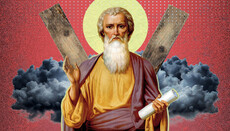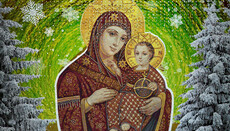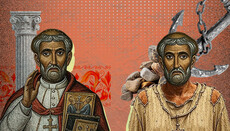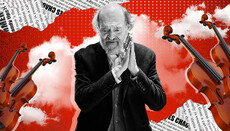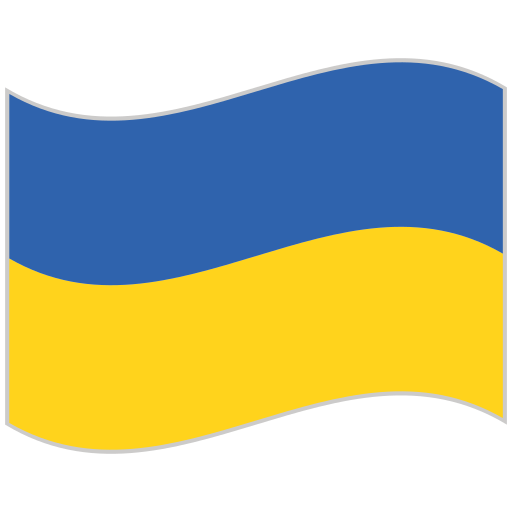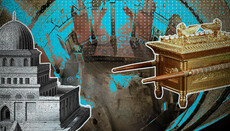Sacrilege with relics in Kyiv-Pechersk Lavra: Parallels with Soviet power
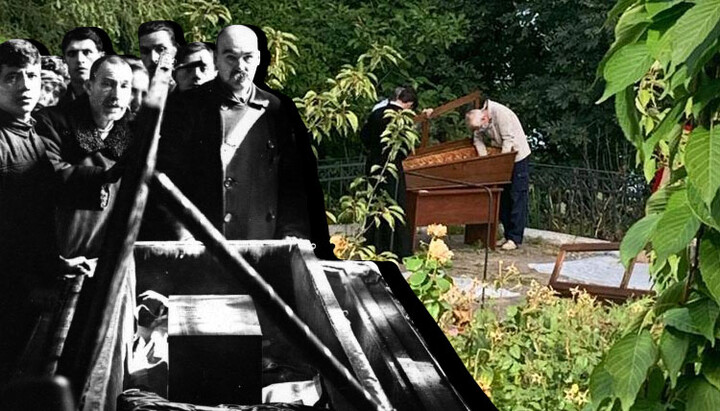
Today, when the whole world has seen the photographs of sacrilegious handling of the relics in the Kyiv-Pechersk Lavra, it is useful to recall a similar campaign one hundred years ago.
When they came to power, the Bolsheviks adopted on January 23, 1918, the Decree On the Separation of Church from State and School from Church. Already in 1919, the VIII Congress of the RCP(b) resolved upon the “complete withering away of religious prejudices” and approved a number of measures to implement this decision. One of the main measures was the campaign of opening the relics. The goal of this campaign was twofold.
First, it was intended that public openings of relics before gathered crowds would demonstrate that no holy relics existed, and that all of it was merely a deception of credulous believers – “the opium of the people,” as V. Lenin put it. Second, if believers attempted to defend their holy things from desecration, it would provide an excellent pretext for repressions against them.
It must be admitted that the Bolsheviks, in general, achieved their aims. The attitude of the majority of the people toward relics was semi-pagan. To expose the “fraud” of relics meant to considerably undermine popular faith. And the Bolsheviks succeeded in this. A major role was played by the fact that very often the reliquaries contained some parts of genuine relics, while the remainder of the “body” was supplemented with wax, wire, cotton, and other materials.
Thus the impression was created that a complete body was lying in the coffin, though it was not so. Moreover, with time these materials decayed into dust, attracted insects, which often died inside as well. A public revelation of such a picture was indeed capable of killing that semi-pagan faith which prevailed among the people. It is no wonder that after such “exposing of fraud” people, without fear, began smashing churches, burning icons, and so on. These public openings were accompanied by the drawing up of protocols, often supplemented by fabricated circumstances detrimental to the Church. The protocols and other anti-church propaganda were published in the journal Revolution and the Church.
After the very first openings, during which all that was described above was revealed, Patriarch Tikhon on February 17, 1919, issued a decree On Eliminating Causes for Mockery and Scandal in Relation to the Holy Relics, in which he instructed diocesan clergy to remove all external additions from the reliquaries. The clergy began cleansing the reliquaries and tombs, but the Soviet authorities regarded this as an attempt to conceal “fraud” and launched persecutions. In many cases believers protested against the opening of relics, especially since often members of the commissions permitted themselves clearly blasphemous actions against them: spitting, obscene abuse, and so forth. This served as an additional pretext for reprisals against people by the authorities.
In Ukraine the anti-religious campaign began immediately after the establishment of Soviet power in 1919. In the Kyiv-Pechersk Lavra, the first commissions were created for the accounting of church valuables. At first, these commissions did not deal with opening relics, but described objects of material value: silver and gold covers, vestments, liturgical vessels, and so on.
Opening of Relics in the Lavra in the 1920s
The first openings of relics in the Kyiv-Pechersk Lavra coincided with the campaign for the confiscation of church valuables due to famine in the Volga region and elsewhere. The purpose of this campaign was not only to rob the Church but also to physically destroy those who dared to resist. “Precisely now, and only now, when in famine-stricken regions people are eating human flesh and hundreds, if not thousands, of corpses lie on the roads, we can (and therefore must) carry out the confiscation of church valuables with the utmost frenzy and ruthless energy, not stopping before suppressing any resistance whatsoever” (Lenin’s letter to V. Molotov, February 10, 1922). On February 23, 1922, the All-Russian Central Executive Committee published the Decree On the Confiscation of Church Valuables for Sale in Aid of the Starving.
In Kyiv this work was carried out under the direction of the Provincial Committee and the People’s Commissariat of Education of the Ukrainian SSR. In the Lavra a special commission was formed, which included representatives of the Commissariat of Education, medical experts, museum staff. Among them were:
· S. S. Yavorsky – representative of the Commissariat of Education;
· N. F. Kashchenko – professor of medicine, botanist, member of the commission on the “natural explanation of the preservation of bodies”;
· M. K. Karger – archaeologist, and others.
This is strongly reminiscent of the commission established by the Ministry of Culture of Ukraine in March 2025 to “study” relics, which also included biologists, archaeologists, zoologists, and others.
Protocols from 1922 have survived, recording the opening of several tombs in the Near Caves. For example:
· St. Ilya of Murom – described as “a robust male body with signs of pathology of the spine and chest”;
· St. Nestor the Chronicler – “a dry body, well-preserved”;
· St. Agapitus of the Caves – “a mummified body.”
The opening protocols may be considered only relatively reliable, since they were drawn up according to a single template established by the decree on the organization of the opening of relics, adopted on February 16, 1919, by the Collegium of the People’s Commissariat of Justice. Typical formulations in many protocols included:
· “Seal removed from the reliquary… Lid opened…”;
· “Discovered: body partially mummified… skin dark, shriveled; soft tissues partly absent…”;
· “Discovered human bones, arranged without anatomical order…”;
· “Inclusions: wax, cotton, twine, fragments of fabric…” and so on.
In the concluding part of the protocol it was required to state: “no signs of ‘incorruption’ in the church-dogmatic sense established; natural mummification/skeletonization observed.”
According to the Memoirs of N. V. Linka: All-Ukrainian Museum Town, “in 1922 all relics in the Near and Far Caves were opened. In 33 coffins there were more or less mummified corpses, in 85 – human bones arranged without anatomical order.” By other data, the opening of relics stretched over several years. In 1924 various manipulations were carried out: reliquaries were taken out into above-ground premises, relics were examined and photographed. Afterwards some relics were returned to the caves, while others were displayed in museum cases.
Documents mention that guides, when conducting tours, were to explain the “natural origin of mummification” under the influence of the soil and microclimate of the caves.
Museum of Atheism in the Lavra
On September 29, 1926, the All-Ukrainian Central Executive Committee and the Council of People’s Commissars of the Ukrainian SSR adopted a resolution on “Recognizing the former Kyiv-Pechersk Lavra as a historical and cultural state reserve and transforming it into the All-Ukrainian Museum Town.” Within this “town” a museum of religion and atheism was opened, where relics were displayed as “anthropological exhibits.” Some relics were kept in glass cases with labels: “mummified remains,” “anthropological object of the 13th century,” etc.
In addition to the museum of atheism, the Lavra housed a theatrical museum, a museum of figures of Ukrainian science and art, the “Ukrainka” museum or Potocki collection, consisting of a library, engravings, lithographs, paintings, sculptures, and so on – much like what today’s reserve administration is planning to set up in the Lavra. Moreover, most of the Lavra’s buildings were transferred to housing stock.
What went on in the Lavra at that time we learn from the memoirs of N. V. Linka: “In the Far Caves several houses were given to World War I invalids who had completely lost their sight from poison gas. These unfortunate blind men often consoled themselves with drink in rather rowdy and indecent company. The monastery guesthouse with its many separate rooms and apartments was densely populated by families of workers and clerks of nearby factories and institutions.
Here also were the monastery cellars, now leased to Vintrest, which stored large supplies of wine. Employees of this enterprise often sampled their goods, willingly treated neighbors, and sold spirits. <…> Moreover, many higher institutions considered museums to be a sort of almshouse <…> mainly for party members, the sick, the disabled, and often simply alcoholics <…> This very mixed and motley population of the museum town lived in constant hostility, quarrels, and disputes.”
In 1934 the All-Ukrainian Museum Town was dissolved. What remained was an anti-religious museum, while part of the other exhibits was transferred to various Kyiv museums. In 1930–1931 the last monks were expelled from the Lavra, all churches were definitively closed, and the caves together with the relics became part of the anti-religious exhibition called the “underground necropolis.” According to eyewitnesses, during tours guides, besides anti-religious propaganda, often allowed themselves to mock the holy things.
Afterword
As we see, what happened a hundred years ago under the Bolsheviks is in some measure repeating itself today. The logic then and now is one and the same: to discredit the Church, deprive the people of the possibility of venerating the holy relics, and enthrone the “abomination of desolation” in the “holy place.” To replace worship with museum tours, Christian preaching with anti-religious propaganda, holy relics with “anthropological exhibits.”
Under the slogan of decommunization, today’s Ukrainian authorities are precisely copying the actions of the Bolsheviks, proving themselves their ideological heirs. But now it is not customary to notice this – now everyone thinks that the authorities’ actions are dictated by patriotism and the defense of the country. So it was a hundred years ago. But one day this frenzy will dissipate, and the similarity with the Bolsheviks will become obvious. The fate of the Bolsheviks is known – that is already history. The fate of today’s persecutors of the Church can only be guessed. But of one thing we may be certain – the Orthodox faith in our people cannot be destroyed. History bears witness to this as well.
